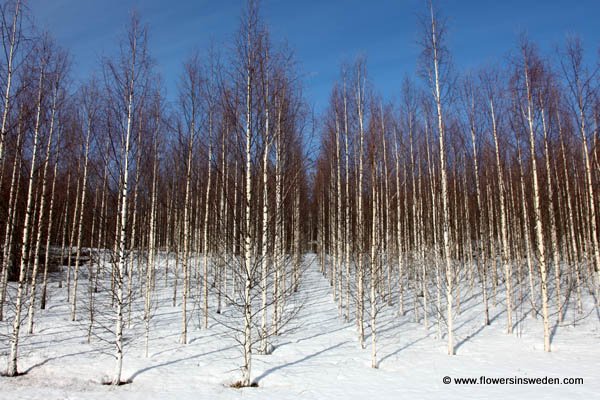
| Scientific name: | Betula pendula Roth | |
| Synonym name: | Betula alba L., Betula pendula var. carelica (Merckl.) Hämet-Ahti, Betula verrucosa Ehrh., Betula verrucosa var. lapponica Lindq. | |
| Swedish name: | Vårtbjörk, hängbjörk, masurbjörk, slöjdbjörk | |
| German name: | Hänge-Birke, Sandbirke, Weißbirke, Warzenbirke | |
| Nederlandse naam: | Ruwe berk | |
| English name: | Silver Birch, Swedish Birch, | |
| Family: | Betulaceae, Birch Family, Björkväxter |

|
| Life form: | Deciduous tree | |
| Stems: | Height 8–25 m, white; drooping branch tips; dark, fissured bark (black diamond-shaped marks) at base of trunk; hairless young twigs, covered with resin warts | |
| Leaves: | Hairless, triangular with a broad base and pointed tip, double-toothed serrated margins, autumn color is usually yellow | |
| Flowers: | Small, greenish to brownish, lacking perianth. Inflorescences dense, pendent Wind-pollinated catkins; male and female flowers in separate inflorescences. | |
| Flowering Period: | May | |
| Fruits: | Small winged nut or achene containing one seed (a samara) | |
| Habitat: | Throughout the country, except in Lapland and in the mountain regions, where it is replaced by Betula pubescens |
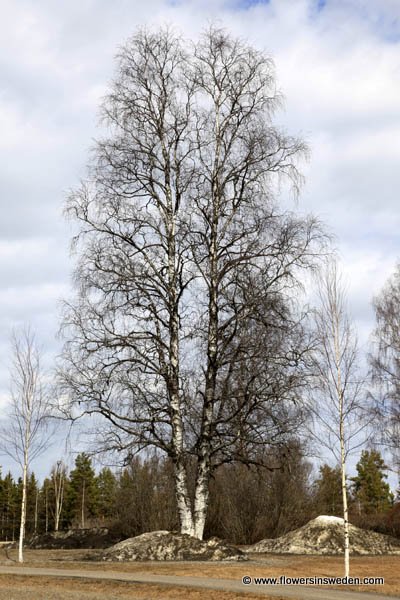
Derivation of the botanical name: Betula, ancient Latin name. Betula is derived from the Sanskrit bhurja, meaning "to shine" in reference to the bark. pendula, Latin alba,"white, dead white; pale"; bright. verrucosa, full of warts; warty.
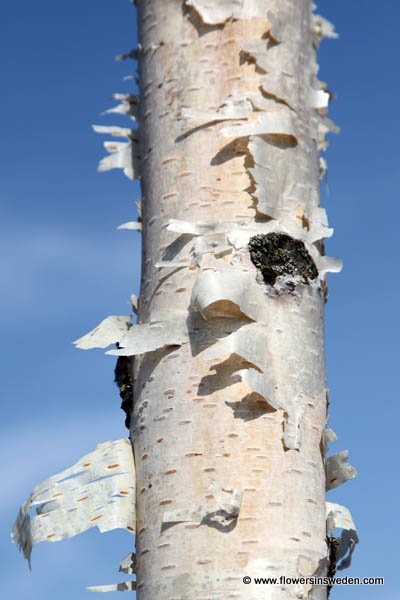
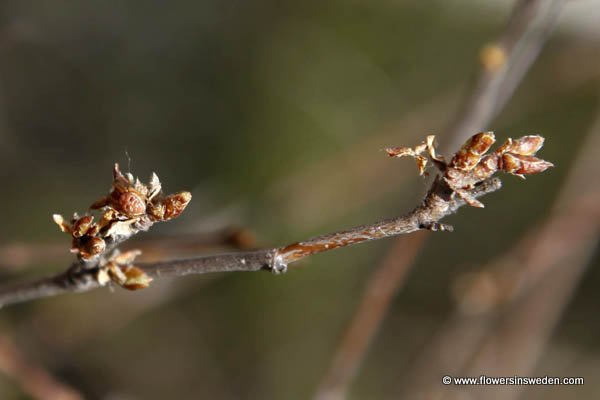
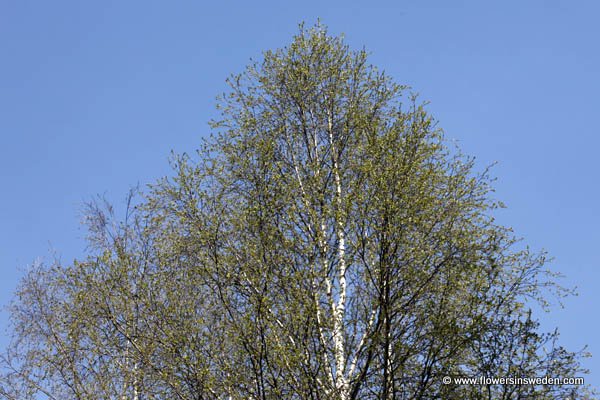
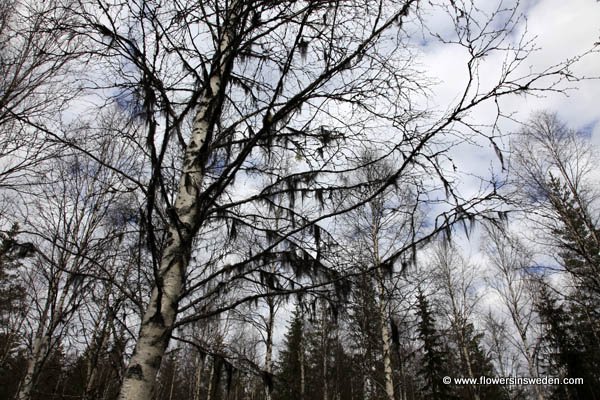
Usnea species, Old Man's Beard, Beard Lichen, Treemoss. Usnea species (species of lichen in the family Parmeliaceae, that generally grow hanging from tree branches) prefer specific chemical and physical qualities and choose to grow on certain tree species. One of the main factors, affecting their occurrence is the acidity of bark, which varies according to tree species; for example, Betula pendula has normally acid (pH 3.4–4.0). |